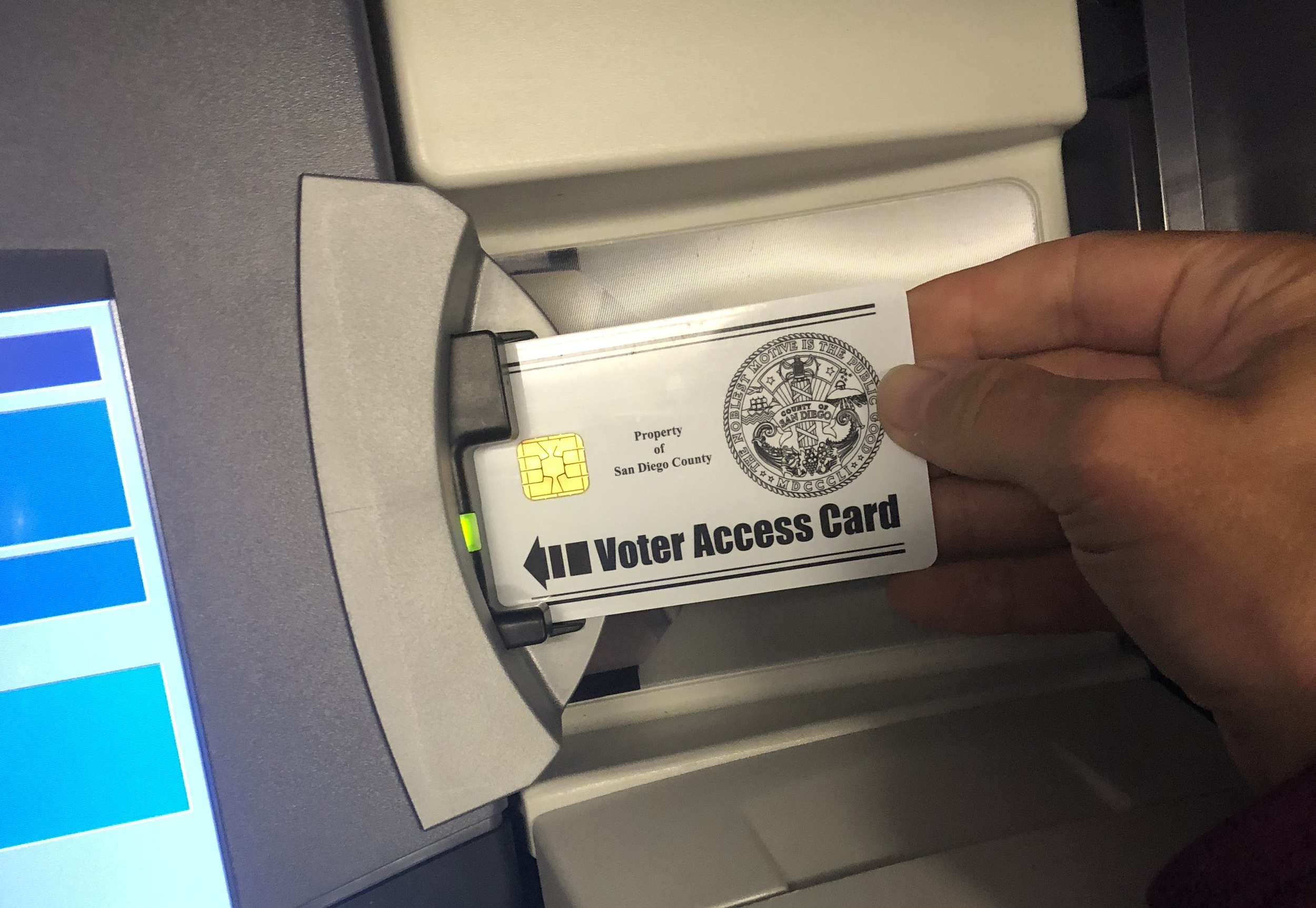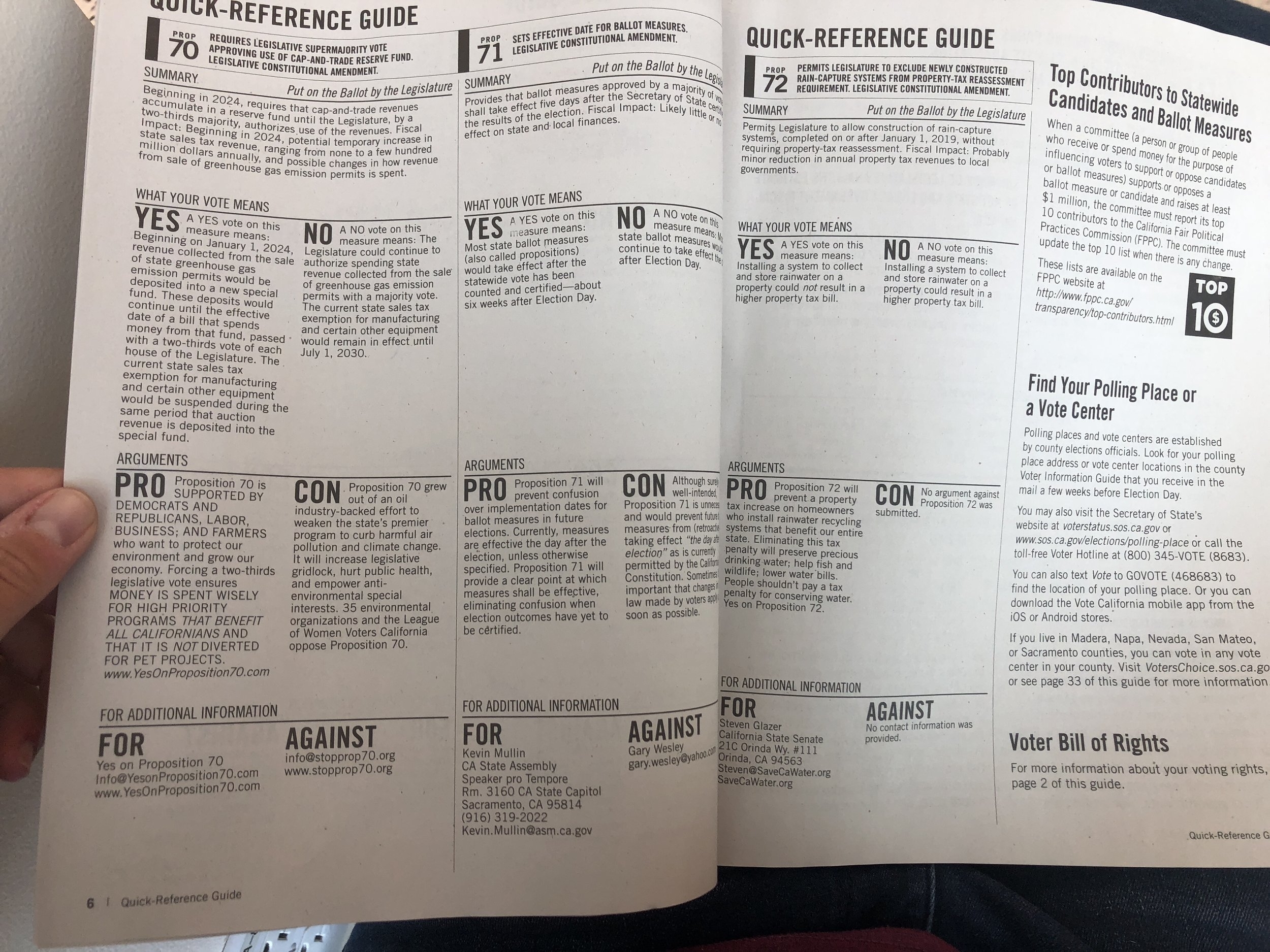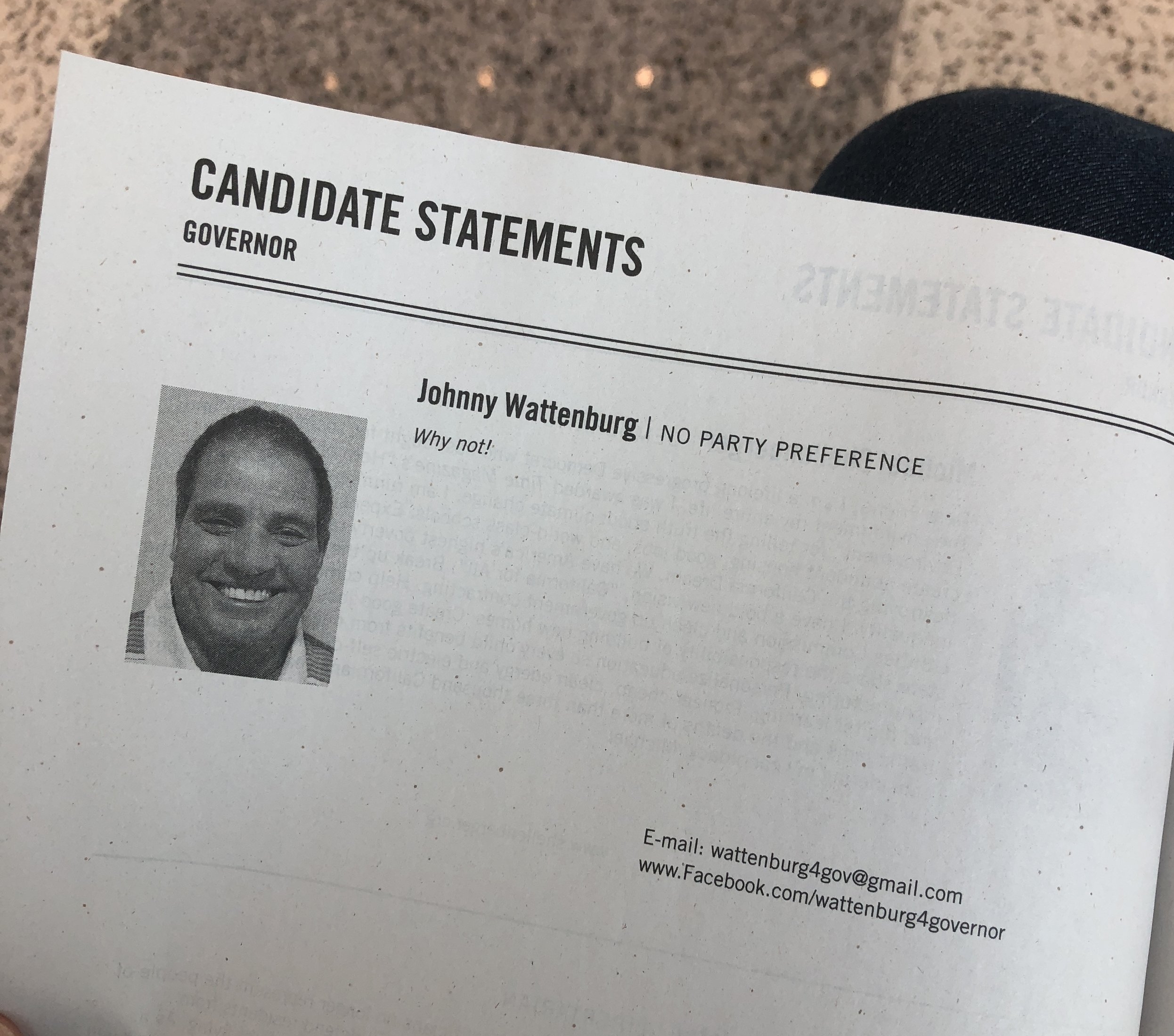Vote Early, Vote Often
I am an elections junkie.
Regardless of the state, or country, I am fascinated by whom people choose to vote for, what meaning they assign to the votes they cast, the voting systems we create and how those systems create both access and barriers.
In the U.S., we grow up internalizing the simple message of one person, one vote. But the reality of how we vote and who votes is infinity more complicated.
I officially moved back to California last summer, but I’ve spent only a few scant weeks in the state since then. But with California’s June primary election looming, I went to the San Diego County Registrar of Voters office last week and made myself a California voter again, 25 years after first voting here as a teenager. For a few years, I voted by mail from college in Maine, receiving the massive California voter guide that describes each proposition and provides each candidate's personal statement. Then one year Maine had a juicy election that prompted me to move my registration to my temporarily adopted state.
When I moved to Vermont after college, I went into the town office in Waitsfield ahead of the next election and took the Voter’s Oath. This is a curiosity of Vermont elections that I still find endearing: every elected official swears an oath to the constitution, and every voter swears an oath to cast their vote with their best intentions and on their own behalf.
For a person who loves to vote, Vermont is an ideal place: you get a LOT of opportunities to an anonymously say your piece. General Election in November, Town Meeting in March, open Primary Elections held separately for each party, an occasional special election and sometimes repeated school budget votes, if the budget fails to pass the first time.
Voting in Waitsfield, Vermont, (population 1,600) in the late 90s was a step back in time. The ballots weren’t fill-in-the-bubble forms, but printed pieces of paper that were stuffed into lock boxes. One year I volunteered to count ballots, which involved teams of two counting aloud, making tally marks to tabulate the results and double-checking each other’s work. I was thrilled and horrified that this was the fundamental cornerstone of American democracy: volunteers in a school cafeteria with golf pencils and scratch paper. (I also remember the Town Clerk one year making a plea to voters to buy modern voting machines, but the voters didn’t agree it was worth the expense.)
My experience with Vermont elections in the last 10 years was unusual because I covered them intensely as a news producer. I voted in every General Election and Town Meeting, but I sat myself out of every Primary Election. (This is a point of endless navel gazing among journalists and media critics — should journalists vote? My own dividing line is to avoid Primaries because Primaries are for parties; but I vote in the General because the General Election is for the people, and journalists are people, too.)
And now I’m a California voter again, and the experience of voting here was radically different than the simple, huge-font Scan-Tron paper ballots I used most recently in Winooski, Vermont (population 7,100). So different are these ballots, that I am again amazed that we are all living in the same county, embracing the same fundamental idea of one person, one vote, while our method of executing that ideal bears no resemblance from one jurisdiction to another. (Federalism!)
I registered to vote and voted early at the same time at the registrar’s office in San Diego (population 1.4 million). I was not asked for ID or proof of residence, but I did fill out a form stating my San Diego address and the address where I was previously registered to vote in Winooski. It was pretty simple, and they asked me to wait a few minutes while my registration migrated through their computer system, and then I could walk across the hall to vote.


The touch-screen computer voting machines at this office serve voters from all voting districts across the county and so to ensure that my screen pulled up the correct ballot, the registrar coded a temporary access card with my address and handed it to me as I went in to vote. At the voting machine, I inserted the card and up came the ballot that covered everything from the governor’s race to my local Board of Supervisors seat. California ballots are notoriously long and complex, and voters are encouraged to study the voter’s guide and make a note of their choices, so that they can vote efficiently. I paged through the voter guide I had marked up, entered my votes on the touch screen computer, and finally got to the end of the ballot.
The computer then asked me to review all my votes and make sure they are marked as I intended, and then it started printing a paper receipt of the votes. Similar to a cash register receipt, it printed my votes a few at a time, asked me to verify that the printout matched what I checked on the screen. And then it sucked the receipt back into the voting machine to save for an eventual recount when someone doesn’t like how this election turns out.


When I finished voting, I removed the access card and returned it to the registrar, who promised that the card only knows my address and does not record my votes. It will be wiped and reused for the next person who comes in to vote here.
California’s actual Primary Election is June 5, and it will narrow the fields of candidates in statewide races down to two people. For a few election cycles, California has used this non-partisan primary system: it doesn’t matter what party (if any) that a voter registers for, nor does it matter what party (if any) a candidate claims. Every voter casts one vote for their top choice, and the top two vote getters will be on the General Election ballot in November. In blue California, this will could mean a General Election that has two Democrats running against each other for governor.
Beyond the machinery and the complexity, one more thing about voting in California stood in contrast to Vermont: the “I Voted” stickers comes in many languages.
Yo vote!
[May 2018]


